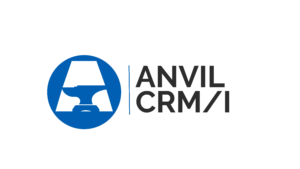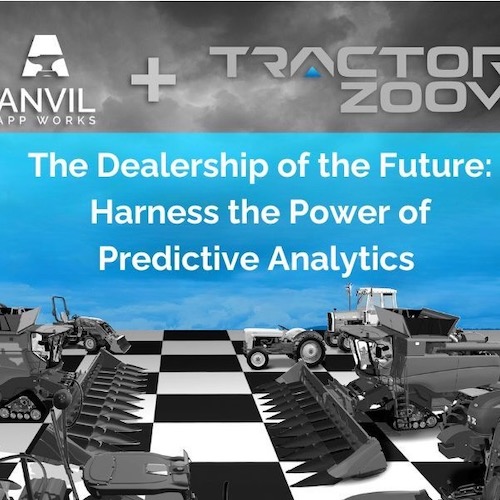In a recent industry panel, a select group of Anvil customers fielded questions from their peers, shedding light on their experiences with Anvil’s CRM and inventory management software. We are showcasing this insightful Q&A in a two-p
art series. Part 2 sheds light on the installation experience from the dealers’ point of view.

THE PANEL:
- Lundi McIntyre (LM), continuous improvement specialist, Hutson Inc.
- Joe Smith (JS), operations manager, Wright Implement
- Ryan Payment (RP), CFO and CIT, LandPro Equipment
- Brian Marshall (BM), corporate systems director, United Ag & Turf Northeast
- Cedric Citrowske (CC), innovation specialist, True North Equipment
Dealerships interested in making a change are often anxious to hear about Anvil’s installation process. Every business wants to avoid delays, down time, and poor adoption in a transition. Our customers have much to say on this topic.
1. Did any of you transition from other systems, and how did that go?
LM: Our transition from Sedona was very smooth. In Anvil, we were able to tailor processes to match the same steps we were using in the dealership. Overall, we’re finding Anvil to have more customization potential.
My advice for dealers getting ready to transition: There is a learning curve, even though Anvil is pretty easy to follow. I’d get a jump start on transferring records as soon as possible. Last, for those with history built up in Sedona, set up an archive of old deals so you can find and access them easily.
RP: We were working in a custom-built system, and our CEO came from a workflow environment. Anvil was seamless in terms of transition. The fact that it’s so customizable is what’s so great about the platform. Checklists we created with Anvil walk sales reps through each process, so they always get things right the first time.
Our accounting people probably appreciate it the most because it adds accountability to the system. They can trace the process to identify what’s missing, and it is easy to see who missed a step.
Anvil reveals a lot about your dealership, but take the time to get it right. We worked hard to test and refine things.
2. How long was implementation from signing to go-live?
LM: Close to six months, but you can do it quicker. We had a large group pilot the system representing every group that would use Anvil on a daily basis to be sure the processes were smooth.
RP: We started July 1 and went live January 1. Incorporating all the data was the heaviest lift. We had a long history in the John Deere EQUIP system to migrate over. That took nearly five months, alone.
BM: We were live with inventory and the CRM in about a month, then launched the Order to Cash feature three months later. The Anvil team is a great partner. Their understanding and knowledge of our industry and what we do has huge value.
The Anvil implementation team applies the lessons learned from each prior deployment to new customers. Similarly, the insights our customers share from their dealerships’ transition to Anvil can be useful to those considering a change.
3. Do you have advice for conducting a successful system roll-out and managing through the transition?
LM: The biggest thing that helped us was taking an extended roll-out. We piloted for 2-3 months with all the functions. We had plenty of support from the Anvil team throughout, so that on Day 1, we didn’t experience a lot of hiccups. Everything had been in place for a while.
We went from no users to 200+ on day one across several different functions and departments. So, rolling Anvil out on a large scale can be done successfully.
BM: We had nothing in place previously. I’m a “rip the band-aid off” kind of guy. So, we did full deployment across the company — 52 locations in one shot. It really comes down to accountability, though. God bless our accounting team for making sure that things submitted the wrong way get pushed back to the sales rep. But with the checklists and the built-in checks and balances, you don’t really have many of those issues.
RP: What’s cool about Anvil is that it can run in parallel with whatever system you have. You can step into it a little bit at a time — which is the approach we took. Although you don’t have to move everybody over at once, I think it is important to have deadlines. Our team could access the old system for a period, but they knew that on January 1 it was going to be turned off and we would only use Anvil.
Once people are in Anvil, the beauty of its Salesforce structure is that it is straightforward and user-friendly. They see immediately that this is better than what we had, so they start to embrace it. Once that happens, acceptance of new features and functionality happens quickly.
JS: One thing that’s really helped us is weekly training meetings with our sales managers. We help them to understand the processes and the potential of Anvil. Each week targets different features. Then, when they meet with reps at their stores they pass along that same information and help them catch on.
CC: I like the Salesforce on-page guidance wizard that pops up to guide the user through the page. You can set how many times the user should see the guides before they stay hidden. It even shows you how many people have worked through the steps. If they are struggling because they bypassed the guides, you see it immediately.
4. If you could change one thing about your onboarding experience, what would it be?
LM: I wish we had done an even more comprehensive pilot. Although we included most areas of the business, we probably left out some people who should have had input. Not really a “system” issue, but a consideration for rollout that could have improved acceptance across the dealership.
JS: There’s not much to change. I get frustrated when I buy something and end up not getting enough benefit out of the product to justify the investment. Looking back at our decision to go with Anvil, I feel like we made a really good decision. I am not worried about staying on the platform long-term because I think the growth possibilities are pretty broad.
CC: I would have done it sooner!
Find Part 1 of the Dealer Q&A here>>









